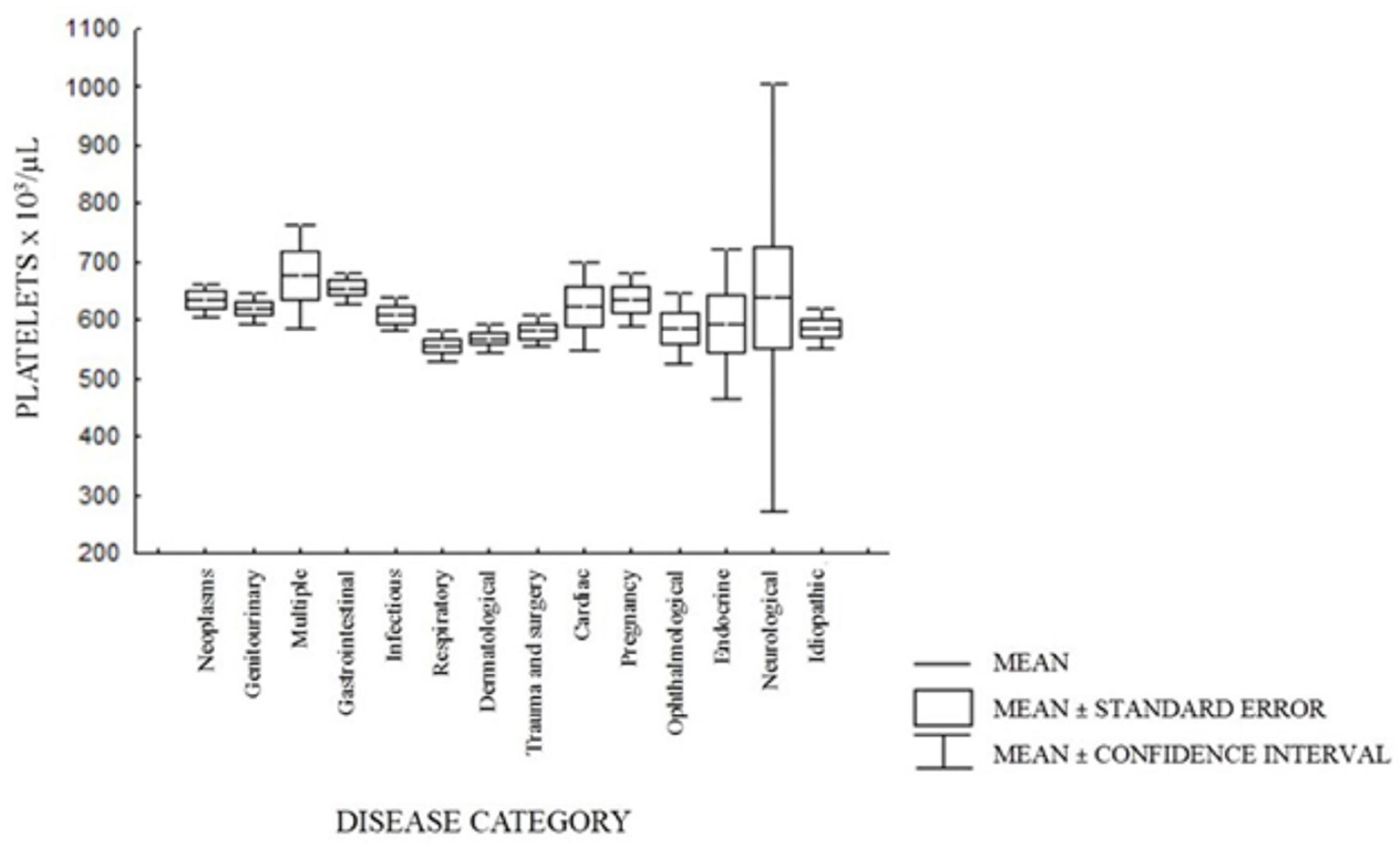Abstract
Thrombocytosis refers to the increase in number of platelets per microliter (µL) of blood. Platelet counts greater than 1,000,000/µL may be associated with clinical signs of bleeding or thrombosis. Previous studies on underlying causes of thrombocytosis have aroused the interest of researchers about its clinical importance in dogs. The objective of this study was to analyze the blood cell counts in dogs in order to define the main diseases or clinical conditions that were associated with thrombocytosis, from 2016 to 2017. This was done to determine the incidence of thrombocytosis, and categorize the increase in platelet count with respect to severity. Of the 12,676 blood samples analyzed, 4.5% presented thrombocytosis (n = 573). Similar mean platelet counts were observed in all diagnosis or different categories of clinical conditions (neoplasms; gastrointestinal, endocrine, and ophthalmological diseases; trauma and surgery; dermatological, cardiac, neurological, infectious, respiratory, genitourinary, idiopathic, and multiple diseases; and pregnancy) with no significant difference (P ≥ 0.05). The disorders most commonly associated with thrombocytosis were gastrointestinal diseases, followed by neoplasms. Furthermore, increased platelet counts were observed in dogs treated with glucocorticoids and vincristine drugs. As for the degree of severity, extreme thrombocytosis occurred more frequently in the presence of gastrointestinal diseases.
Keywords:
gastrointestinal disease; neoplasm; platelets; thrombosis

